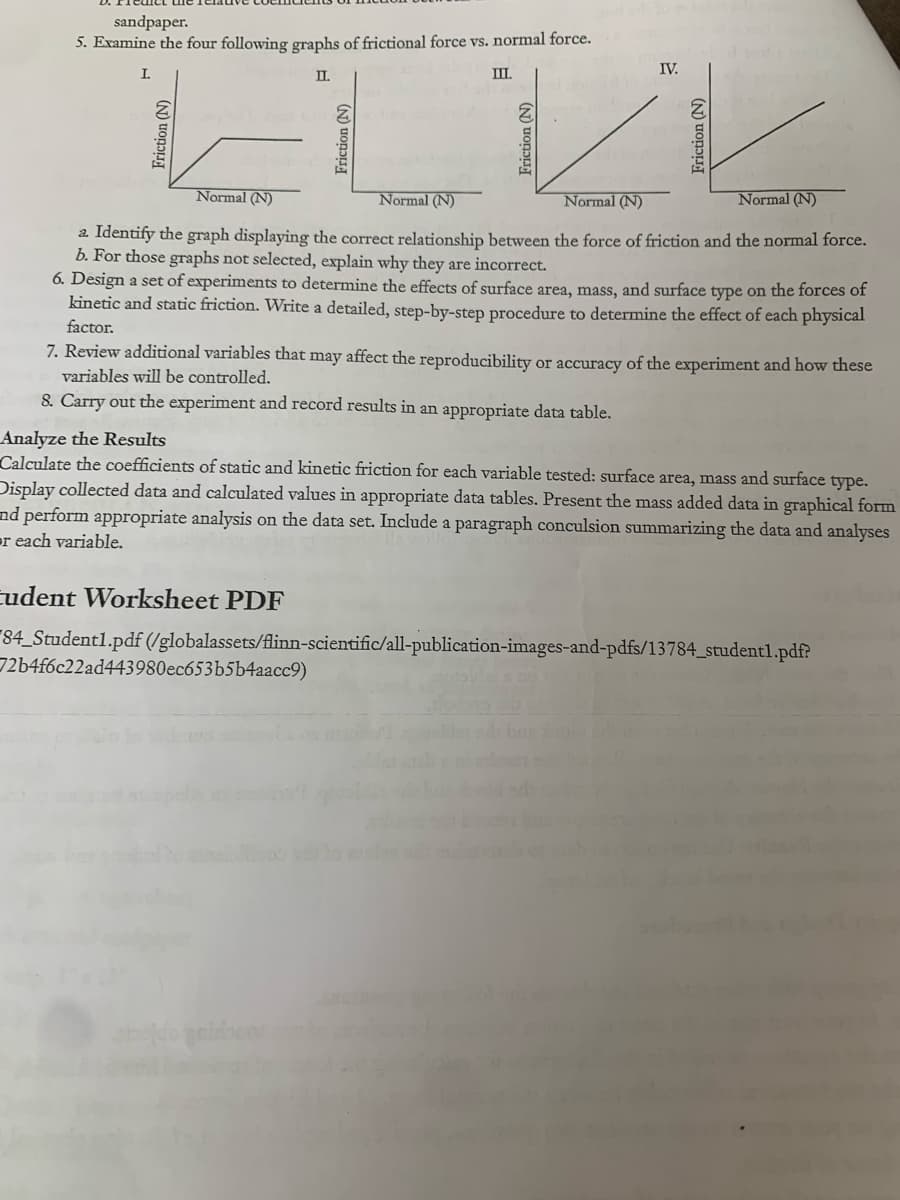College Physics
1st Edition
ISBN:9781938168000
Author:Paul Peter Urone, Roger Hinrichs
Publisher:Paul Peter Urone, Roger Hinrichs
Chapter5: Further Applications Of Newton's Laws: Friction, Drag, And Elasticity
Section: Chapter Questions
Problem 3PE: (a) What is the maximum frictional force in the knee joint of a person who supports 66.0 kg of her...
Related questions
Question
#5 which is the correct graph and why aren’t other correct?

Transcribed Image Text:sandpaper.
5. Examine the four following graphs of frictional force vs. normal force.
III.
ELKK
Normal (N)
I.
II.
Normal (N)
Normal (N)
Normal (N)
a. Identify the graph displaying the correct relationship between the force of friction and the normal force.
b. For those graphs not selected, explain why they are incorrect.
IV.
6. Design a set of experiments to determine the effects of surface area, mass, and surface type on the forces of
kinetic and static friction. Write a detailed, step-by-step procedure to determine the effect of each physical
factor.
7. Review additional variables that may affect the reproducibility or accuracy of the experiment and how these
variables will be controlled.
8. Carry out the experiment and record results in an appropriate data table.
Analyze the Results
Calculate the coefficients of static and kinetic friction for each variable tested: surface area, mass and surface type.
Display collected data and calculated values in appropriate data tables. Present the mass added data in graphical form
and perform appropriate analysis on the data set. Include a paragraph conculsion summarizing the data and analyses
or each variable.
Eudent Worksheet PDF
84_Student1.pdf
72b4f6c22ad443980ec653b5b4aacc9)
(/globalassets/flinn-scientific/all-publication-images-and-pdfs/13784_student1.pdf?
gaidocos
Expert Solution
This question has been solved!
Explore an expertly crafted, step-by-step solution for a thorough understanding of key concepts.
Step by step
Solved in 2 steps

Knowledge Booster
Learn more about
Need a deep-dive on the concept behind this application? Look no further. Learn more about this topic, physics and related others by exploring similar questions and additional content below.Recommended textbooks for you

College Physics
Physics
ISBN:
9781938168000
Author:
Paul Peter Urone, Roger Hinrichs
Publisher:
OpenStax College


College Physics
Physics
ISBN:
9781938168000
Author:
Paul Peter Urone, Roger Hinrichs
Publisher:
OpenStax College
